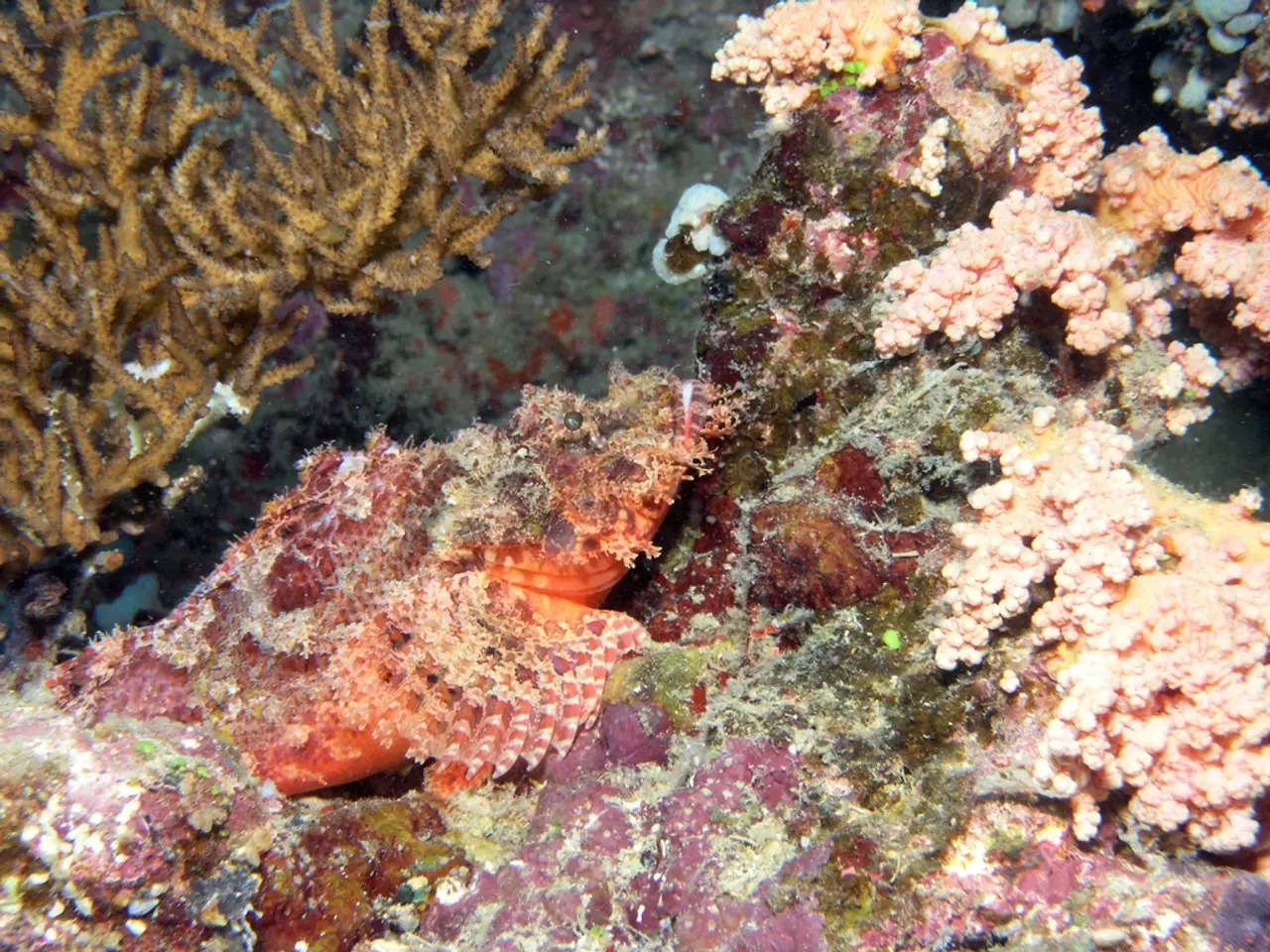Harvesting Wealth from the Sea: Enhancing Coastal Earnings through the Utilization of Nature's Marine Waste Processors – Sea Cucumbers
With rising global demand for sea cucumbers, Indian coastal farmers are finding a lucrative and eco-friendly way to earn a living. This marine animal, belonging to the phylum Echinodermata, resembles soft, fat worms or cucumbers with leathery skin and has medicinal properties, making it a valuable commodity.
The Farming Process
Sea cucumber farming in India, particularly for the commercially valuable species Holothuria scabra (commonly known as the sandfish), involves several key steps:
- Site Selection: Coastal areas with clean, well-oxygenated seawater and a sandy or muddy bottom are ideal for farming. The water temperature should be moderate, generally between 25–30°C for optimal growth.
- Broodstock Collection and Conditioning: Healthy adult sea cucumbers are collected and acclimatized. They require adequate nutrition and water quality to stimulate spawning.
- Spawning and Larval Rearing: Induced spawning is carried out in hatcheries by manipulating environmental cues. Eggs hatch into larvae, which are nurtured through various stages in controlled tanks with proper aeration and feeding.
- Juvenile Production and Nursery Phase: Once larvae settle into juveniles, they are transferred to nursery tanks or low-density culture ponds to grow until they reach a releasable size.
- Grow-out Culture: Juveniles are cultured in ponds, tanks, or sea cages/baskets with substrate similar to their natural habitat. Regular monitoring of water quality, feed availability, and disease control is essential.
- Harvesting: After 8–12 months, sea cucumbers reach marketable size (usually 150–250 grams). Harvesting is done by manual collection.
- Processing: Post-harvest processing includes cleaning, boiling/parboiling, and drying (sun drying or mechanical drying) to produce the commercially valuable dried product.
Regulatory and Conservation Considerations
Holothuria scabra is subject to pressures from overfishing, so cultivation helps reduce wild stock exploitation and supports conservation efforts. Permits and compliance with local aquaculture and environmental regulations are required. Sustainable sourcing of broodstock and adherence to guidelines from agencies like the Indian Council of Agricultural Research (ICAR) or fisheries departments are important. Awareness of the species' conservation status and trade controls, such as considerations from CITES if international trade is involved, is necessary.
Benefits and Challenges
Sea cucumber farming can provide an additional livelihood for coastal fishers and farmers, as the dried product fetches high prices in international markets. However, it requires training and initial support in seed supply and pond management. Illegal harvest and overexploitation of wild sea cucumbers are banned in India, making hatchery-based farming the only legal and sustainable route.
In pond maintenance, water quality and temperature should be checked regularly, predators like crabs should be prevented, overcrowding should be avoided, and the sediment should have enough organic matter for feeding. The drying process is crucial in maintaining the quality and price of the final product. Sea pens or net enclosures for sea cucumber farming should be set up in calm coastal areas where water flow is gentle, and nets should be secured to prevent predators from entering.
The species Holothuria scabra plays an important ecological role by recycling nutrients in marine ecosystems, underlining the benefit of farming it in an environmentally responsible way. Sea cucumbers feed on decaying organic matter, algae, and micro-organisms in the sand, helping clean and recycle the ocean floor.
[1] Indian Council of Agricultural Research (ICAR)
[2] Convention on International Trade in Endangered Species of Wild Fauna and Flora (CITES)
- The Indian Council of Agricultural Research (ICAR) is a crucial body that provides guidelines for sustaining the hatchery-based farming of Holothuria scabra, ensuring conservation efforts are supported.
- With the demand for sea cucumber products on the rise in international markets, conventional fishing of sea cucumbers can lead to overexploitation and Illegal harvest, making hatchery-based farming a more sustainable and legal option.
- In addition to providing a lucrative income, sea cucumber farming through ingenious technology requires careful attention to environmental factors, such as water quality, temperature, and habitat, reflecting an integration of finance, science, and environmental-science into lifestyle and business.
- As sports are about maintaining physical fitness, training and initial support for sea cucumber farming can be seen as a sport, requiring dedication, strategy, and discipline—from seed supply and pond management to predator prevention and maintaining the drying process for the final product's quality.

![Top-Ranking BitMEX Referral Code for 2025: [KvNvfN] - Claim 5,000 BMEX Tokens and Secure a 20%...](/en/content/images/size/w640/format/webp/20250818100417_bitmex-referral-code-crypto.jpeg)


